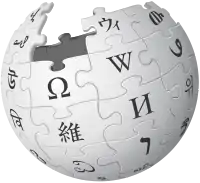Heyting algebra
English
Etymology
After Dutch mathematician Arend Heyting, who developed the theory as a way of modelling his intuitionistic logic.
Noun
Heyting algebra (plural Heyting algebras)
- (algebra, order theory) A bounded lattice, L, modified to serve as a model for a logical calculus by being equipped with a binary operation called "implies", denoted → (sometimes ⊃ or ⇒), defined such that (a→b)∧a ≤ b and, moreover, that x = a→b is the greatest element such that x∧a ≤ b (in the sense that if c∧a ≤ b then c ≤ a→b).
- 1984, Robert Goldblatt, Topoi, the categorial analysis of logic, page xii:
- The laws of Heyting algebra embody a rich and profound mathematical structure that is manifest in a variety of contexts. It arises from the epistemological deliberations of Brouwer, the topologisation (localisation) of set-theoretic notions, and the categorial formulation of set theory, all of which, although interrelated, are independently motivated. The ubiquity lends weight, not to the suggestion that the correct logic is in fact intuitionistic instead of classical, but rather to the recognition that thinking in such terms is simply inappropriate — in the same way that it is inappropriate to speak without qualification about the correct geometry.
- 1994, Francis Borceux, Handbook of Categorical Algebra 3: Categories of Sheaves, Cambridge University Press, page 13,
- Proposition 1.2.14 should certainly be completed by the observation that the modus ponens holds as well in every Heyting algebra. Since, in the intuitionistic propositional calculus, being a true formula is being a terminal object (see proof of 1.1.3), the modus ponens of a Heyting algebra reduces to
- and imply
- which is just obvious.
- Proposition 1.2.14 should certainly be completed by the observation that the modus ponens holds as well in every Heyting algebra. Since, in the intuitionistic propositional calculus, being a true formula is being a terminal object (see proof of 1.1.3), the modus ponens of a Heyting algebra reduces to
- 1997, J. G. Stell, M. W. Worboys, The Algebraic Structure of Sets and Regions, Stephen C. Hirtle, Andrew U. Frank (editors), Spatial Information Theory A Theoretical Basis for GIS: International Conference, Proceedings, Springer, LNCS 1329, page 163,
- The main contention of this paper is that Heyting algebras, and related structures, provide elegant and natural theories of parthood and boundary which have close connections to the above three ontologies.
-
Usage notes
- The symbols for the lattice operations join (∨) and meet (∧) and for the partial order relation (≤) are reinterpreted as logical connectives: ∨ becomes or, ∧ becomes and and ≤ becomes proves (⊢).
- Thus, (a→b)∧a ≤ b (the defining condition for →) becomes (a→b), a ⊢ b, which is modus ponens. The qualifying condition c∧a ≤ b ⇒ c ≤ a→b becomes c, a ⊢ b ⇒ c ⊢ a→b, which is the deduction theorem.
- The pseudo-complement of a, denoted ¬a, is defined as a→0, and a→b is called the relative pseudo-complement of a with respect to b
- A Heyting algebra in which a∨¬a = 1 (the law of excluded middle) is a Boolean algebra. In this sense, Heyting algebras generalise Boolean algebras, which model (propositional) classical logic.
Synonyms
- (bounded lattice): pseudo-Boolean algebra
Hypernyms
- (bounded lattice): distributive lattice, residuated lattice, bicartesian closed category
Hyponyms
- (bounded lattice): Boolean algebra, complete Heyting algebra, finite distributive lattice
Derived terms
- bi-Heyting algebra, biHeyting algebra
- co-Heyting algebra, coHeyting algebra
- complete Heyting algebra
Related terms
- Heyting prealgebra
Translations
bounded lattice equipped with operation called implies
|
See also
- pseudo-complement
- relative pseudo-complement
- residuated lattice
Further reading
 Intuitionistic logic on Wikipedia.Wikipedia
Intuitionistic logic on Wikipedia.Wikipedia  Boolean algebra (structure) on Wikipedia.Wikipedia
Boolean algebra (structure) on Wikipedia.Wikipedia  Complemented lattice on Wikipedia.Wikipedia
Complemented lattice on Wikipedia.Wikipedia  Distributive lattice on Wikipedia.Wikipedia
Distributive lattice on Wikipedia.Wikipedia  Lindenbaum–Tarski algebra on Wikipedia.Wikipedia
Lindenbaum–Tarski algebra on Wikipedia.Wikipedia - Heyting algebra on nLab
- Pseudo-Boolean algebra on Encyclopedia of Mathematics